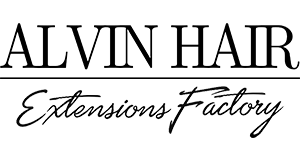In the ever-evolving world of hair businesses, salon owners, and online retailers, the power of customer engagement cannot be overstated.
In an era where competition is fierce and customer expectations are constantly on the rise, building strong relationships with new client and your existing clients, has become more crucial than ever.
This article discusses the importance of engaging with customers in the context of businesses that provide hair-related products or services to other businesses.
By delving into effective strategies and highlighting real-life examples, we will uncover how customer engagement can be the key to enhancing loyalty and driving repeat business for hair businesses around salon world.
Whether you own a salon or operate an online retail platform, this article will equip you with actionable insights and valuable knowledge to connect with your customers on a deeper level, resulting in long-term success.
Relevance of Customer Engagement in the Hair Business
1. Increased customer loyalty and retention
Customer loyalty and client retention are critical for the sustained growth and success of hair businesses.
By actively engaging with your customers, you foster a sense of loyalty that goes beyond mere transactions.
When customers feel valued and connected to your brand, they are more likely to become repeat customers and advocates for your business.
Engaging with customers allows you to understand their needs, preferences, and concerns, enabling you to tailor your products, services, and experiences accordingly.
By consistently delivering personalized interactions and demonstrating genuine care, you build trust and loyalty, reducing the likelihood of customers switching to competitors.
Furthermore, loyal customers are more inclined to provide feedback, giving you valuable insights for improvement and innovation.
Overall, customer engagement plays a pivotal role in nurturing and strengthening customer loyalty, leading to long-term relationships and sustained business growth.
2. Enhanced brand reputation and credibility
In the competitive landscape of the hair business, building a strong brand reputation and credibility is paramount.
Customer engagement acts as a catalyst in this endeavor. When you actively engage with your customers, you establish a reputation for being attentive, responsive, and customer-centric.
By promptly addressing their inquiries, concerns, and feedback, you demonstrate a commitment to customer satisfaction.
Positive interactions and experiences with your brand translate into positive word-of-mouth recommendations, both online and offline.
As customers share their positive experiences with friends, family, and online communities, your brand gains credibility and trust.
This amplification of your brand reputation helps attract new customers, as they are more likely to trust the recommendations and endorsements from their peers.
By actively engaging with your customers, you create a virtuous cycle of positive brand perception, leading to increased customer trust and market credibility.
3. Higher customer lifetime value (CLV)
Customer lifetime value (CLV) is a crucial metric that measures the total revenue a customer generates over their entire relationship with your business. Customer engagement plays a significant role in increasing CLV.
By fostering ongoing engagement and building strong relationships with your customers, you encourage repeat purchases and long-term loyalty.
Engaged customers are more likely to explore and try new products or services from your business, resulting in higher average order values and increased frequency of purchases.
Moreover, when more customers are engaged, they become loyal clients are more likely to remain with your company for a longer time, thus decreasing the number of lost customers and the expenses associated with acquiring new ones.
By prioritizing customer engagement, you can tap into the possibility of raising the customer lifetime value (CLV), which increases the worth your small business’ obtains from each customer and promotes stable revenue growth.
4. Positive word-of-mouth marketing and referrals
Word-of-mouth marketing and referrals encourage repeat clients and are powerful drivers of growth for hair businesses.
Engaging your customers effectively can lead to positive word-of-mouth marketing, where satisfied customers actively recommend your products or services to their networks.
These recommendations are important as they are from clients coming from reliable sources. When you make an effort to interact with your customers and give them great experiences, it helps create a strong basis for good publicity by word of mouth.
Happy customers are also more likely to write positive reviews and ratings on online sites, which can impact the choices of potential customers.
By leveraging the power of customer engagement, you can amplify positive word-of-mouth marketing and benefit from the organic growth it generates.
Harnessing the potential of customer referrals can result in a steady stream of new customers, expanding your business owner’ customer base and enhancing your own business owner’s visibility and reputation.
Identifying and Segmenting Your Target Audience
1. Demographic segmentation (e.g., age, gender, location)
One of the fundamental approaches to identifying and segmenting your target audience in the hair business is demographic segmentation.
This involves categorizing your customers based on their demographic attributes such as age, gender, and location.
By understanding the demographics of your target audience, you can tailor your products, services, and marketing strategies to better meet their specific needs and preferences.
For example, different age groups may have varying hair care concerns and styling preferences, necessitating the development of age-specific product lines or salon services.
Similarly, gender-based segmentation allows you to create targeted marketing campaigns that resonate with male and female customers differently.
Furthermore, geographical segmentation enables you to adapt your offerings to suit the cultural preferences and regional trends in different locations.
By leveraging demographic segmentation, hair businesses can effectively identify and connect with their target audience on a more personalized level, leading to increased customer engagement and loyalty.
2. Psychographic segmentation (e.g., lifestyle, interests, preferences)
Psychographic segmentation involves understanding and categorizing your target audience based on their psychological and behavioral characteristics, including lifestyle, interests, and preferences.
This approach goes beyond demographics and delves into the motivations, aspirations, and values that drive consumer behavior.
If you divide your audience based on their psychographics, you can understand their lifestyle choices, hobbies, interests, and brand preferences.
This helps you understand that some customers focus more on sustainable and environmentally friendly hair products, while others are more interested in the latest hair trends and styles.
By aligning your offerings with the psychographic preferences of different segments, you can develop tailored marketing messages, personalized experiences, and curated product assortments that resonate with specific customer groups.
This deeper understanding of your target audience’s psychographics enables you to establish stronger emotional connections, foster customer loyalty, and position your brand as a trusted and relatable choice within the hair industry.
3. Behavior-based segmentation (e.g., buying patterns, frequency of salon visits)
Behavior-based segmentation involves grouping your target audience based on their behaviors, such as buying patterns and frequency of salon or spa visits.
You can identify various customer groups and customize your strategies to effectively engage with them by observing their behavior and typical actions.
For the salon industry for example, some customers may be occasional purchasers, visiting a hair salon often only for special occasions, while others may be frequent buyers, regularly seeking professional hair care services.
Understanding these behavioral patterns allows you to tailor your marketing messages, loyalty programs, and promotions to cater to the specific needs and preferences of each segment.
Moreover, by utilizing behavior-based segmentation, you can pinpoint chances for upselling or cross-selling to customers who showcase specific purchasing behaviors or preferences.
By leveraging behavior-based segmentation, hair businesses can optimize their customer engagement efforts, drive repeat business, and foster long-term customer relationships based on individual preferences and behaviors.
Building an Effective Customer Engagement Strategy
Website optimization and customer loyalty programs
Building an effective customer engagement strategy for hair businesses starts with optimizing your website and implementing customer loyalty and referral programs well.
A well-designed and user-friendly website ensures a seamless online experience for your customers. It should showcase your products or services, provide informative content, and include features such as online booking or e-commerce functionality.
By optimizing your website, you create a platform that encourages customer interaction, engagement, and conversions.
Customer loyalty programs play a crucial role in fostering engagement and building lasting relationships.
These programs can offer rewards, discounts, or exclusive perks to reward and incentivize customers to repeat purchases and stay engaged with your brand.
By implementing a robust customer loyalty and membership program here, you encourage customer retention, increase customer lifetime value, and provide an added incentive for customers to choose your business over competitors.
Social media engagement and community building
Social media platforms provide an excellent opportunity to engage with your target audience and build a community around your hair business.
By actively participating in social media, you can share valuable content, showcase your expertise, and engage with customers through comments, likes, and shares.
Social media also allows for real-time customer feedback and provides a platform for customers to share their experiences and recommendations.
By doing good service and responding promptly to customer queries and feedback, you demonstrate a commitment to customer satisfaction and establish a positive brand image.
Email marketing and personalized communication:
Email marketing strategy remains a powerful tool for customer engagement in the hair business.
By capturing customer email addresses through various touchpoints, such as website sign-ups or purchases, you can establish direct communication channels.
Email campaigns allow you to provide personalized and relevant content to your customers, such as hair care tips, product recommendations, exclusive promotions, or updates about new services.
Personalization in email marketing can be achieved by segmenting your customer list based on their preferences, past purchases, or engagement history.
In-store experiences and personalized consultations
For hair businesses with physical locations, in-store experiences offer discounts, and personalized consultations offer unique opportunities for customer engagement.
Creating a welcoming and inviting atmosphere in your salon or store, along with attentive customer service, enhances the overall customer experience.
These personalized interactions build client trust, increase customer satisfaction, and encourage loyalty.
Furthermore, by educating customers about proper hair care routines or providing styling tips during in-store experiences, you empower them and create a memorable, value-added experience.
Hosting events and workshops
Hosting events and workshops is an effective way to engage with your target audience, educate them, and establish your business as a knowledge hub in the hair industry.
You can organize educational workshops on hairstyling techniques, product demonstrations, or even collaborate with other hair and beauty industry experts to share insights on current clients and trends.
Events like product launches or special promotions can create buzz and excitement more clients, attracting both existing customers and potential new clients.
Collaboration with influencers and industry experts
Collaborating with influencers and industry experts can significantly increase revenue and enhance customer engagement for hair businesses.
Influencers with expertise and a strong presence in the hair and beauty industry that can help amplify your brand’s reach and credibility.
By partnering with influencers, you can leverage their influence to create engaging content, share product reviews or tutorials, and reach a wider audience.
Additionally, collaborating with industry experts for joint events, guest appearances, or educational content enhances your brand’s authority and fosters trust among your target audience.
Leveraging Data and Analytics for Customer Engagement
Customer surveys and feedback
Gathering customer feedback is an invaluable way to measure customer satisfaction and understand their needs, preferences, and behaviors.
Customer surveys provide a platform for customers to share their honest opinions about your services or products.
Additionally, you can use this data to create personalized experiences by providing tailored content or promotions that cater to the specific preferences of individual customers.
Website analytics and user behavior tracking
By leveraging web analytics, you can gain valuable insights into user behavior and engagement trends.
Website analytics allows you to track visitor traffic, interactions with content, and conversion rates on various pages of your website.
This data provides invaluable information about customer segments that may show an increased interest in certain products or services.
Social media listening and sentiment analysis
Social media listening allows you to track customer conversations about your brand and industry trends.
By identifying mentions of your business, competitors, or products online, you can gain an understanding of how customers perceive your brand and the types of comments they make.
Additionally, sentiment analysis provides a picture of overall customer satisfaction levels with regard to your brand.
Personalization and customization
Personalization and customization can be used to create tailored experiences for customers.
You can use customer data to send customized messages or offers that are specifically tailored to each customer.
Furthermore, by utilizing tools such as chatbots powered by AI, you can provide quick and automated responses to commonly asked questions or requests, making it easier for customers to find the information they need.
Targeted promotions and offers
By leveraging the data collected about customers, you can create targeted promotions and offers to promote customer loyalty.
For example, offering discounts or special promotions for customers who have previously purchased certain products or services encourages them to come back and purchase again.
You can also use geo-targeting techniques to send location-based offers that are tailored to each customer’s interests and preferences.
Predictive modeling for customer behavior
Predictive modeling for customer behavior is an often cost effective way to analyze patterns in customer data and create targeted marketing strategies.
Using predictive analytics allows you to send timely messages or offers that are most likely to be successful in engaging customers and increasing sales.
For example, predictive modeling works by analyzing customer data, such as purchase history and browsing behavior, to create predictions about future customer behavior.
These insights can be used to create more effective marketing strategies that are tailored specifically for each customer.
Measuring and Evaluating Customer Engagement Efforts
Measuring and evaluating customer engagement efforts is crucial to understand the effectiveness of your strategies and making informed decisions for improvement.
Here are three key metrics commonly used to assess customer engagement in the hair business:
1. Customer satisfaction scores (CSAT)
Customer satisfaction scores measure the level of satisfaction customers have with their experience interacting with your business.
CSAT surveys typically ask customers to rate their satisfaction on a scale or provide feedback on specific aspects of their experience.
By analyzing CSAT scores, you can identify areas of strength and areas that require improvement in your own customer service training and engagement efforts.
Monitoring CSAT scores over time helps track trends and evaluate the impact of any changes or initiatives implemented to enhance customer engagement.
Regularly assessing CSAT allows you to understand how satisfied your customers are and provides valuable insights for refining your strategies.
2. Net Promoter Score (NPS)
Net Promoter Score is a metric that measures the likelihood of customers recommending your hair business to others.
NPS surveys typically ask customers to rate their likelihood of recommending your business on a scale.
Based on their responses, customers are classified as promoters (likely to recommend), passives (neutral), or detractors (unlikely to recommend). NPS provides a holistic view of customer engagement and loyalty.
Higher NPS scores indicate strong customer advocacy and engagement, while lower scores may signal areas where you need to improve customer experiences.
By regularly measuring and tracking NPS, you can evaluate the effectiveness of your existing customer engagement strategies and identify opportunities to enhance customer loyalty and advocacy.
3. Customer retention rate and repeat purchases
Customer retention rate and repeat purchases are essential metrics for evaluating the effectiveness of your customer engagement efforts.
Customer retention rate measures the percentage of customers who continue to do business with you over a specific period. A high retention rate indicates strong customer engagement and satisfaction.
Additionally, monitoring repeat purchases, such as tracking the frequency and volume of purchases from existing customers, provides insights into their loyalty and engagement levels.
Analyzing these metrics helps identify the success of your engagement strategies in encouraging repeat business and retaining customers.
Increasing customer retention and driving repeat purchases are indicators of effective customer engagement efforts.
Takeaways
The power of customer engagement is immense, and by leveraging the tools available to you today, you can create tailored experiences for your customers that will increase loyalty and drive repeat business.
By analyzing website analytics, using social media listening and sentiment analysis, personalizing and customizing customer experiences, creating targeted promotions and offers, utilizing predictive modeling to better understand customer behavior, and measuring and evaluating engagement efforts over time—you’ll be able to optimize your strategies to provide valued experiences for your customers.
Doing so will set you apart from competitors in the hair business as customers recognize the level of effort put forth in engaging with them.








